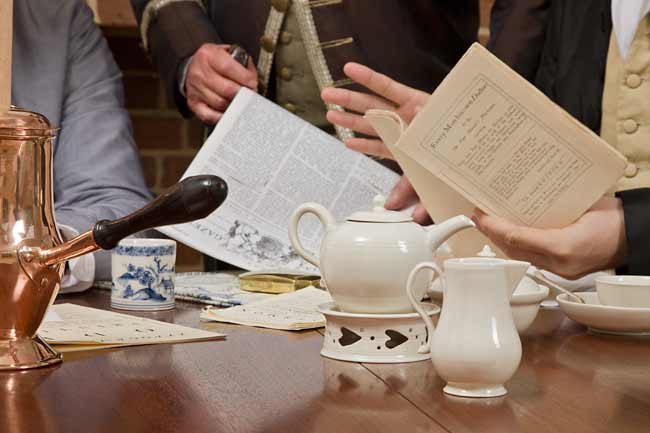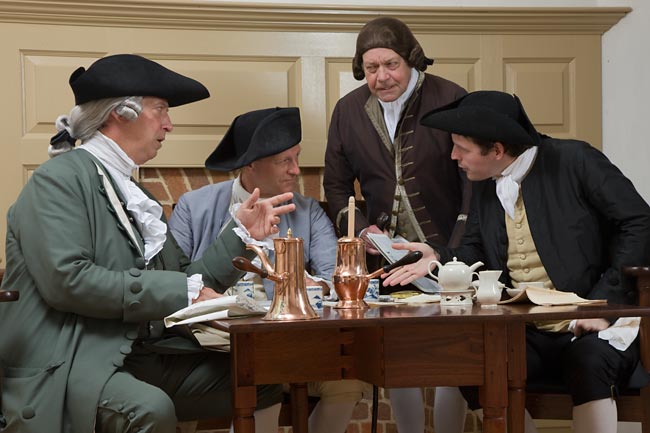Page content
Richard Charlton
- Arrived in Williamsburg in 1760
- Worked as wigmaker and coffeehouse proprietor
- Coffeehouse central in Revolutionary events
- Died in Richmond in 1779
Richard Charlton in Williamsburg
Wigmaker Richard Charlton first appears in local records in early 1760. His previous residence is unknown, although he may have emigrated directly from Alnwick, Northumberland, England. Richard Charlton married Sarah, called “Sally,” Satterwhite in early 1765. Their daughter Jane was born on August 21, 1766. Their sons, Edward and Thomas, are named in Richard’s will, but their birth dates and birth order are not known.
Coffeehouse Site
In addition to his wigmaking trade, Charlton operated a coffeehouse on the north side of Duke of Gloucester Street. Charlton rented a 35-foot-square building situated on a lot of the same modest dimensions from Nathaniel Walthoe, local entrepreneur and clerk of the Governor’s Council. On July 2, 1767, Richard Charlton placed the following notice in the local newspaper:
“The Coffee-House in this city—being now opened by the subscriber as a TAVERN, he hereby acquaints all Gentlemen travellers and others, who may please to favour him with their Company, that they will meet with the best entertainment and other accommodations, such as he hopes will merit a continuance of their custom.”
In late 1765, according to Governor Francis Fauquier’s own account of events, the porch of the coffeehouse was the scene of Williamburg’s protest against the Stamp Act—and of the Governor’s protection of George Mercer, the stamp distributor.
By May 1771, Charlton had moved his tavern to another locale, and Christiana Campbell was Walthoe’s tenant at the former coffeehouse site. She did not remain there long, however, announcing her Waller Street location in early October 1771. Shortly afterwards, Charlotte Dickson and her son Beverley purchased the coffeehouse property.
Death and Estate Settlement
Richard Charlton died in Richmond, Virginia, on November 2, 1779. The cause of death is not given, only described as a “lingering illness” for which he had traveled to the springs in hopes of a cure.
He had written his will in May of 1779, leaving his estate to his widow and three children equally. His executors were his widow, Robert Prentis, and John Galt. The estate was inventoried and appraised at a much inflated value of £14,419.14.
Insights into the Charlton household come from the advertisement of the estate sale to be held in December 1779. At the time of his death, Charlton’s property included a slave woman described as “a very good cook” and a young mulatto man talented in shaving, dressing hair, and waiting at table. The notice also requested the return of several books from Charlton’s library—three volumes of Voltaire and one volume of Goldsmith’s Roman History. Charlton also had speculated on lands in the Ohio Country. In early 1783, three thousand acres “within two miles of the falls” were for sale by the executors.
For further reading:


